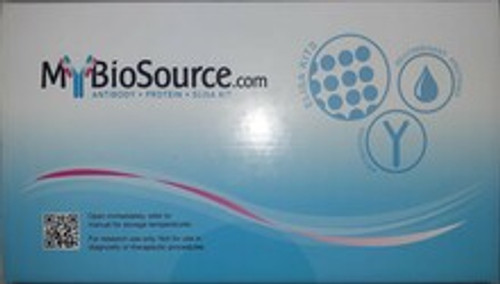Product Description
Recombinant Human Probable DNA dC->dU-editing enzyme APOBEC-3C (APOBEC3C) is available at Gentaur for Next week Delivery.
Gene Name: APOBEC3C
Alternative Names : APOBEC1-like Phorbolin I
Expression Region : 1-190aa
AA Sequence : MNPQIRNPMKAMYPGTFYFQFKNLWEANDRDETWLCFTVEGIKRRSVVSWKTGVFRNQVDSETHCHAERCFLSWFCDDILSPNTKYQVTWYTSWSPCPDCAGEVAEFLARHSNVNLTIFTARLYYFQYPCYQEGLRSLSQEGVAVEIMDYEDFKYCWENFVYNDNEPFKPWKGLKTNFRLLKRRLRESLQ
Sequence Info : Full Length of BC011739
Tag Info : N-terminal GST-tagged
Theoretical MW : 49.8 kDa
Storage Buffer : Tris/PBS-based buffer, 5%-50% glycerol. If the delivery form is lyophilized powder, the buffer before lyophilization is Tris/PBS-based buffer, 6% Trehalose, pH 8.0.
Endotoxin Level : Not tested-
Biological Activity : Not tested
Storage : Short term: -20°C; Long term: -80°C. Minimize freeze and thaw cycles.
Research Area : Epigenetics and Nuclear Signaling
Restriction : For Research Use Only. Not for use in diagnostic procedures, drug use, or for administration to humans or animals.
Relevance : DNA deaminase (cytidine deaminase) which acts as an inhibitor of retrovirus replication and retrotransposon mobility via deaminase-dependent and -independent mechanisms. After the penetration of retroviral nucleocapsids into target cells of infection and the initiation of reverse transcription, it can induce the conversion of cytosine to uracil in the minus-sense single-strand viral DNA, leading to G-to-A hypermutations in the subsequent plus-strand viral DNA. The resultant detrimental levels of mutations in the proviral genome, along with a deamination-independent mechanism that works prior to the proviral integration, together exert efficient antiretroviral effects in infected target cells. Selectively targets single-stranded DNA and does not deaminate double-stranded DNA or single-or double-stranded RNA. Exhibits antiviral activity against simian immunodeficiency virus (SIV), hepatitis B virus (HBV), herpes simplex virus 1 (HHV-1) and Epstein-Barr virus (EBV) and may inhibit the mobility of LTR and non-LTR retrotransposons. May also play a role in the epigenetic regulation of gene expression through the process of active DNA demethylation.
Function : DNA deaminase (cytidine deaminase) which acts as an inhibitor of retrovirus replication and retrotransposon mobility via deaminase-dependent and -independent mechanisms. After the penetration of retroviral nucleocapsids into target cells of infection and the initiation of reverse transcription, it can induce the conversion of cytosine to uracil in the minus-sense single-strand viral DNA, leading to G-to-A hypermutations in the subsequent plus-strand viral DNA. The resultant detrimental levels of mutations in the proviral genome, along with a deamination-independent mechanism that works prior to the proviral integration, together exert efficient antiretroviral effects in infected target cells. Selectively targets single-stranded DNA and does not deaminate double-stranded DNA or single-or double-stranded RNA. Exhibits antiviral activity against simian immunodeficiency virus (SIV), hepatitis B virus (HBV), herpes simplex virus 1 (HHV-1) and Epstein-Barr virus (EBV) and may inhibit the mobility of LTR and non-LTR retrotransposons. May also play a role in the epigenetic regulation of gene expression through the process of active DNA demethylation.
Involvement in disease :
Subcellular location : Nucleus, Cytoplasm
Protein Families : Cytidine and deoxycytidylate deaminase family
Tissue Specificity : Expressed in spleen, testes, peripherical blood lymphocytes, heart, thymus, prostate and ovary.
Paythway :
Uniprot ID : Q9NRW3
 Euro
Euro
 British Pound
British Pound
 US Dollar
US Dollar








